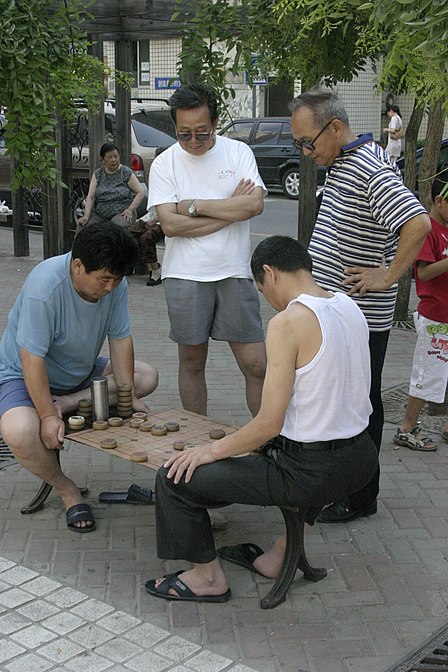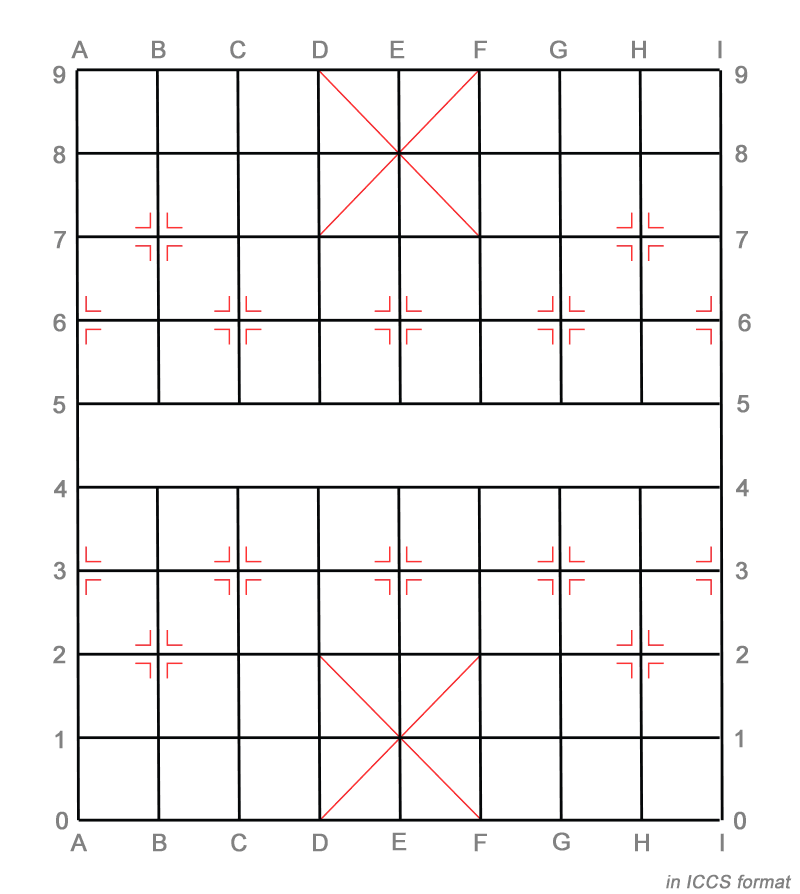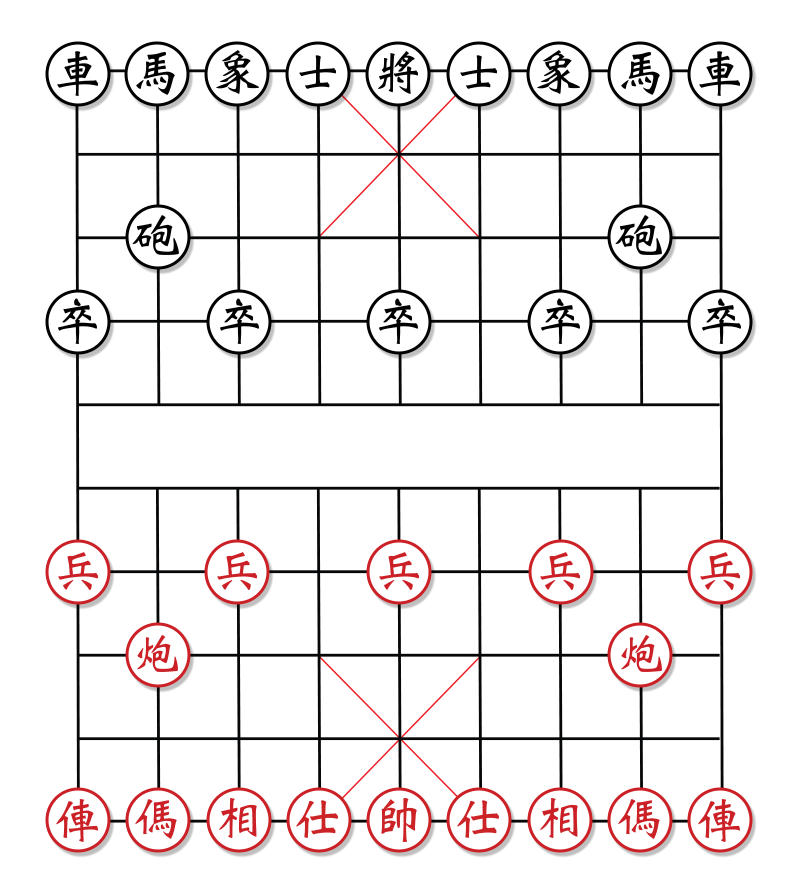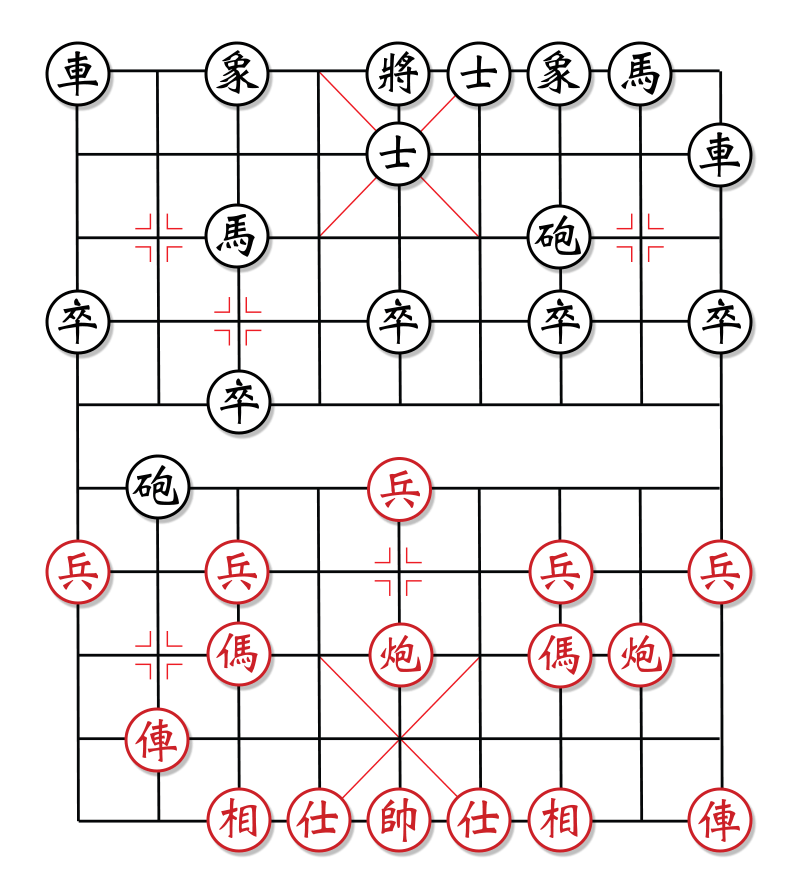The Rules
Traditionally the red team goes first. The objective is to corner and destroy the enemy general. The game is played in sequence until the conditions for ending the game are fulfilled. Each player moves one piece per turn.
To see it in action, hover over each paragraph:
Attacking
Units move into the space they attack, occupying it.
Winning
The game ends when one general is dead, or when it becomes impossible to kill either general.
Check
After putting your opponent's general in danger, you must announce the fact by saying "jiang" ("check" works too).
Unlike in western Chess, it is possible to put your general in danger. It is up to the enemy to exploit your mistake.
Chasing
There are a variety of rules that aim to prevent prepetual chasing, though the definition of "perpetual" differs from rule book to rule book.
In general the side resorting to perpetual chasing can be ruled to have lost the game.
Club chinese chess allows six consecutive chase moves per piece used to chase before the action becomes "perpetual."

















